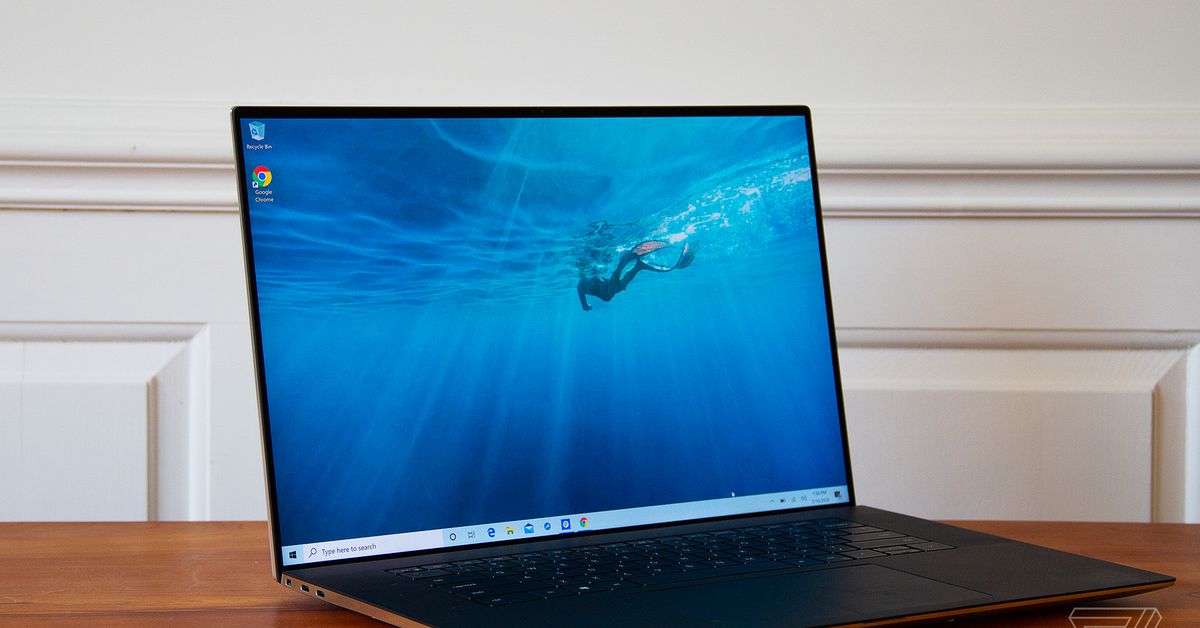Even Tim Sweeney thinks the Dell XPS 17 needs better cooling
Photo by Monica Chin / The VergeTim Sweeney has made many headlines this year as the main character of Epic’s turbulent courtroom war with Apple. But on Tuesday, the CEO appears to have revealed an equally noteworthy side of...

Tim Sweeney has made many headlines this year as the main character of Epic’s turbulent courtroom war with Apple. But on Tuesday, the CEO appears to have revealed an equally noteworthy side of himself: He’s a Dell XPS 17 user.
Sweeney’s affinity for the XPS 17 dates as far back as September of this year. The executive tweeted a link to Dell’s XPS 17 purchase page on the 19th, remarking that the laptop had “great options, simple view, customer-friendly defaults, reasonable prices, easy checkout.” Further down the thread, Sweeney complained that the high prices of entry-level workstations often drive developers to purchase gaming PCs instead.
Almost two months later, a new tweet suggests that Sweeney has joined the ranks of XPS 17 users. While he doesn’t directly state that he’s purchased an XPS 17 for himself, his impressions indicate that he’s spent at least some hands-on time with the device.
“The Dell XPS 17 is a good laptop but not great,” Sweeney now writes on Twitter. “Amazing screen, good keyboard and pad, but super awkward Home/End key placement for coding.” But his primary concern is the cooling system. Per the CEO, the XPS 17 “[r]uns hot even when idle” and “constantly chirps out RF noise from CPU activity through the speaker.”
Hello, Tim. Welcome to the world of portable workstations.
The Dell XPS 17 is a good laptop but not great. Amazing screen, good keyboard and pad, but super awkward Home/End key placement for coding (earlier Dells supported FN+Left/Right). Runs hot even when idle, constantly chirps out RF noise from CPU activity through the speaker. https://t.co/7bS46meTrk
— Tim Sweeney (@TimSweeneyEpic) November 9, 2021Dell XPS laptops are excellent and well worth their high sticker price — but they’re also notoriously incompetent at keeping their chips cool. The last time I reviewed an XPS 17, the chip spent a solid amount of time over 90 degrees Celsius. Its smaller sibling, the XPS 15, has been an even worse offender in the past — I could hear its fans a room over during my testing, the keyboard was toasty under any kind of load, and the bottom was often so hot that I couldn’t keep the device on my lap. I’ve even seen the XPS 13 2-in-1 hit 100 a few times. And the noise to which Sweeney refers is likely coil whine, which has been a common complaint against XPS laptops for years now. (It doesn’t mean a laptop is bad, but it is annoying.)
Now this is an awesome laptop configurator. Great options, simple view, customer-friendly defaults, reasonable prices, easy checkout. Now do workstations!https://t.co/Z9gjOJjWpT
— Tim Sweeney (@TimSweeneyEpic) September 20, 2021It seems here that Mr. Sweeney has run into one of the most common perils of premium laptop shopping: the price of thinness. The XPS 17 straddles the line between a business and a consumer PC — its reasonable price and customer-friendly purchase interface make it a viable buy for single-unit shoppers, but it also has the thin and light build, as well as the power, that corporate customers often demand.
But those benefits still come with tradeoffs, and that’s particularly true when it comes to cooling heavy-duty chips. Even the best manufacturers on the market (setting aside Apple’s most recent MacBook Pro models — they’re in a league of their own) haven’t really figured out how to keep a workstation as thin and light as the XPS 17 both quiet and cold.
I’m sure there are battalions of engineers across OEMs working on this problem as we speak. Please know, engineers, that we are all rooting for you. In the meantime, my advice to Mr. Sweeney would be to utilize the “Quiet” cooling profile in Dell’s power manager.

 KickT
KickT 
































